Face Your Fears with Common Sense
Confronting my trail-running fear of wild animals made me take extra precaution
Welcome back! Social media tells me it’s Global Running Day. Predictably, a lot of products and influencers are using the day and its hashtag to promote something. I like to make every day (or most days, anyway) a running day. As my first coach used to say, “Any day you can run is a good day.” I hope this newsletter inspires you to run year round. Today’s post concerns safety so that you can enjoy trail running with more confidence.
On my long run last Saturday, when I ran and hiked for six hours solo, I transitioned from a dirt road to a singletrack trail that ascended a mountainside south of Telluride, starting at about 9,000 feet elevation and getting up close to 11,000. At first, the pine and aspen forest felt welcoming and bright, revealing peekaboo views of snow-streaked mountains rising on the other side of a deep river gorge.
But then, the fairytale forest became darker and more dense, blocking the views and the sky above the canopy. My pace slowed to only about 20 minutes per mile because so many downed trees crossed the trail, I had to carefully climb over or under them without incurring a puncture wound from the poking branches.
Then, swaths of crusty, dirty snow began to cover the shadowy north-facing slope with increasing frequency. I hiked across the snow—it was too slippery and deep to run—and I held my breath hoping the surface would hold my weight, which it mostly did. But the snow kept surprising me by grabbing my foot when the surface broke, and the sharp crust scraped my shin when I post-holed.
The slower I went, the more spooked and vulnerable I felt because I couldn’t leave that forest with any speed or directness. Looking at my phone’s trail map app to track the trail under the snow, I felt somewhat tangled and trapped. But the mule-headed part of me wanted to keep going, to connect with another trail, because I planned to complete a loop route.
Feeling defeated, I eventually turned around because following the trail felt impossible, and I retraced my steps in the snow for an out-and-back instead of the loop.
I didn’t mind being alone. In fact, I love my solo runs and am unwilling to give them up. But I did mind feeling scared and jumpy. I have a fear this season that I can’t shake, so I’m doing something about it before it turns into a full-blown phobia that inhibits me.
I fear the large animals I might confront, especially mountain lions. Black bears around here aren’t too threatening; I’ve spotted them in the distance, and they typically turn and amble away as if I’m the threat. But mountain lions, they terrify me.
I’ve never seen a big cat, in all my years of trail running, but the prospect makes my heart race and preoccupies my thoughts when I’m in forests like this.
“Face your fears” but how?
I’ve been thinking of the saying “face your fears” and how to do that. I used to assume it meant exposure therapy—literally getting close with whatever scares you, such as snakes or heights, in a safe setting to desensitize the fear. Or doing the thing you fear, such as public speaking, to get more comfortable with it. But that’s not always possible. If I went to a zoo or wildlife center and faced a cougar on the other side of a glass wall, I know I’d feel sorry for the captured animal and also continue to fear a confrontation when no barrier would protect me.
I also thought it meant, “get over it,” as in, be tough, be brave. Don’t be chicken shit. But that can be foolish. I think a better saying is, “Prepare for your fears.” Learn about the threat, take precautions, and make an action plan. So that’s what I did.
First, I acknowledged my fear, researched it a bit, and gauged whether it’s legitimate or overblown. It is, in fact, legit. Mountain lion attacks, while rare, happen and can be deadly, and sightings prove they live around me.
In 2019, Colorado Parks and Wildlife released this video of a trail runner, who had cuts on his face and neck, describing how a mountain lion attacked him near Fort Collins. He fought it off and eventually killed it by pinning its neck down with his knee and suffocating it (a scene I replay in my mind to bolster confidence that I could muster that kind of self-defense in a last-ditch effort to survive). The next year, this viral video by a hiker in Utah showed a mountain lion stalking and charging him for six minutes because he encountered her cubs, so she was protecting them. More recently, this sickening article described a mountain lion attacking two brothers, 18 and 21, in Northern California and killing the older brother.
Close to home, three neighbors have spotted mountain lions in areas where I run regularly. Last year, a porch camera captured video of four mountain lions—likely a mama and three grown kittens—walking in front of a house that’s only a couple of miles from me. Then, in late March, my friend spotted this big cat and took its photo while hiking near Eider Creek close to town.
Around the same time, our friends three miles down the road, who live at the intersection of Highway 145 and Deep Creek Road, shared this nighttime video from their porch cam.
So I’m not nuts, mountain lions really live around me and are potentially threatening.
I’ve always known and practiced the best practical step to avoid an animal encounter, which is to make noise. On forested runs like last Saturday, I played a podcast or music on my phone’s speaker in my pocket, rather than wearing AirPods, so my ears stayed open and aware, and the noise hopefully warned animals that I’m approaching. I also periodically clapped my hands and called out things like, “Hey bear, here I come, bear!” But I felt like I needed something more for defense.
As a result, two weeks ago I bought a 10-ounce can of bear spray. I don’t know why I didn’t think of it sooner—probably because I assumed it was for grizzly bears, which don’t live around here. But bear spray isn’t just for bears! It works on mountain lions, moose, and aggressive dogs, too. It fits well in the front holster of my hydration pack, where I normally carry one of two soft-flask bottles, so now I carry the extra hydration bottle in a back pocket and keep the bear spray up front where I can easily access it.
I watched numerous safety videos on how to carry and use the bear spray, like this one, which explained that the spray is made of peppers “grown in the depths of hell and watered with lava.” Now that’s some hyperbole I won’t forget.
I hope it’s like the first aid I carry, or the earthquake go-bag I used to keep in the front closet of our old house when we lived on an earthquake fault—something I never need to use. But it brings me some peace of mind. On my run in that snowy, dense forest, the bear spray in my front pocket helped me keep my cool so I could focus less on my fear, more on the challenges and pleasures of running.
The most dangerous thing that day turned out to be man-made. I was running downhill on singletrack when I heard a whizzing noise. Glancing over my shoulder, I glimpsed a man on a mountain bike speeding toward me. Instinctively I jumped to the side, right before he passed. I yelled at his back, “Call out next time!” I was so angry he didn’t use his voice or a bell to warn me. He had a clear view of my brightly colored shirt and hat. If I had been wearing AirPods and spacing out to music, I probably would not have heard him in time to move, and he might have run into me.
On singletrack trails where there’s less room for error, keep your wits about you. Save listening to your favorite music with headphones, or spacing out with an audiobook, for wider paths and roads with clear sight lines.
For more mountain-running safety tips, read the second half of this post:
What else I’m reading, watching, doing, and thinking about
I spent less time than usual on this week’s post because I’m preoccupied with giving my memoir writing project extra attention every day, thanks to the 1000 Words of Summer monthlong challenge hosted by
. Even though I don’t know Jami Attenberg, and I’m not connected except in spirit to the other thousands of writers engaged in this virtual challenge, it motivates me. It gives me a positive competitive spark, as in, “If they can do it, so can I.” If you missed the June 1 start or don’t want to subscribe to her newsletter, that’s OK. You can read the 1000 Words book for loads of helpful advice and motivation.Related: I’m still achieving “retreat mode” as described in this post. Certain steps really do create an environment for better focus and writing flow.
Also related: Because I’m writing about my adolescence, especially scenes from 1984 when I was 15, I’m reliving the 1980s. It’s good timing, then, for me to watch “Thank You, Goodnight: The Bon Jovi Story” documentary on Hulu. I’ve always been into Bon Jovi’s music, not in an ironic way (as with so-bad-they’re-good bands like Kiss). I mean, I truly like Bon Jovi’s music and other banger rock hits from ’80s hair bands (Def Leppard’s “Pour Some Sugar on Me” springs to mind). And Bon Jovi’s hair, which looked a lot like mine 40 years ago, only better—I can’t get enough of it! And, oh my god, he still looks so good in his 60s with silver-white hair.
And one more thing related to the above, as in monthlong challenges: my Dry January has become Dry June. As I’ve written before here, I’ve struggled to drink in moderation and, since 2020, have been gradually weaning myself off wine and drinking less frequently, using Dry January to reset a relationship with alcohol. This year, my decision not to drink at home ever has made me less likely to drink on special nights out, like Monday at a dinner party when wine flowed liberally in everyone else’s glass. I just didn’t want the inevitable after-effect of poor sleep and a headache. I still crave a beer at home occasionally, but I’ve mentally removed it as an option, even though we have beer and wine in the fridge because my husband drinks. I don’t want to slip back into the nightly beer habit, which leads to two beers and wanting a third. I order a beer on occasion when we go out, but my reaction to it now is more “meh” than “yum.” I share this here to show, with time and intention, habits can change. I’ll be honest and admit if I restart regular drinking at home.
Finally, I found this to be sobering and thought provoking:
’s column “Less Marriage, Less Sex, Less Agreement” about the widening gulf in attitudes, perspectives, and politics between women and men. (I recognize his column takes a hetero perspective and addresses genders in a binary way, which may alienate some readers, but I found his observations and generalizations about men and women to be worthwhile.) “The social bonds of previous generations appear to be eroding among young people, and this has serious consequences for coupling, future birthrates, and social cohesion,” he reports from the Brookings Institution. As the parent of a daughter and son who are now young adults, I’ve been thinking about this column and what it means for their future. I share the worry Kristoff describes at the end: “I worry that gender frictions may grow and add tension to modern life, leaving more people facing the world alone with no one to snuggle up to and provide long-term comfort. I fear that I’m a romantic in a world that is becoming less romantic.” Strive to be kind and loving, kids, and don’t get so busy or hard-hearted that you give up on old-fashioned love.
I welcome your comments on anything that resonated above, especially if you’ve faced a fear in a practical way.
If you’d like to support this newsletter but would rather not subscribe at the supporter level, please consider a small donation to this virtual tip jar.
Here’s a better photo to end with:

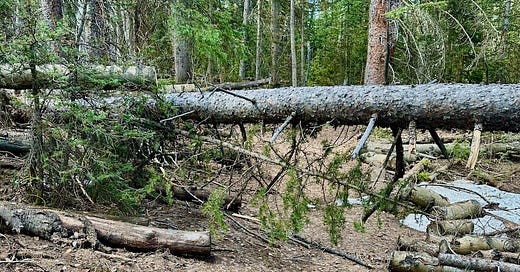


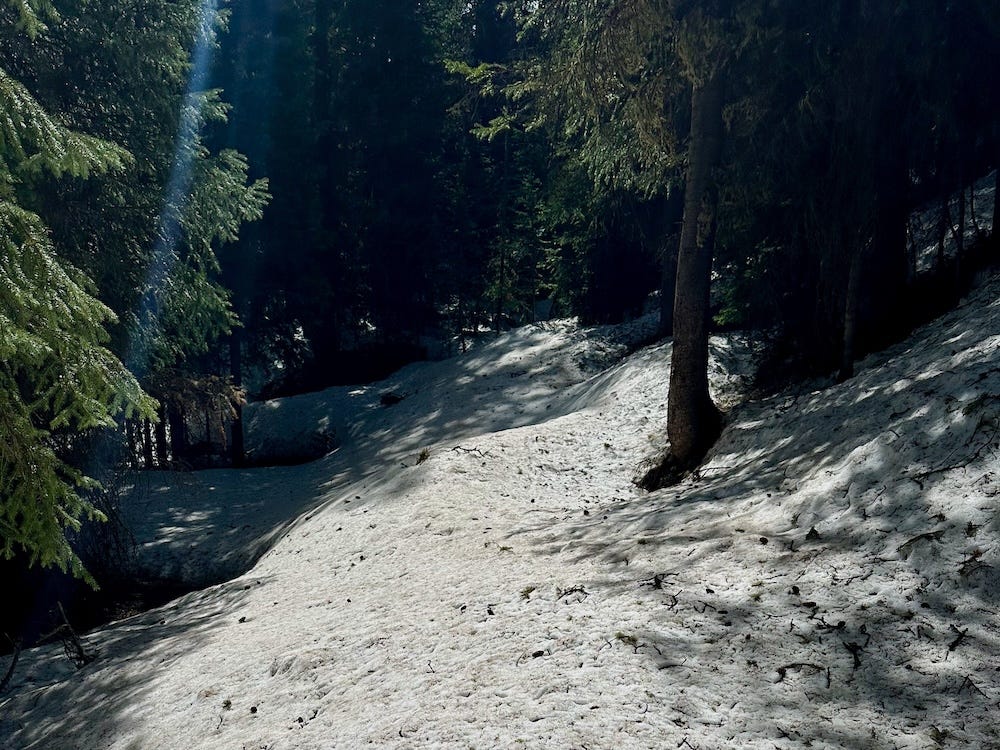
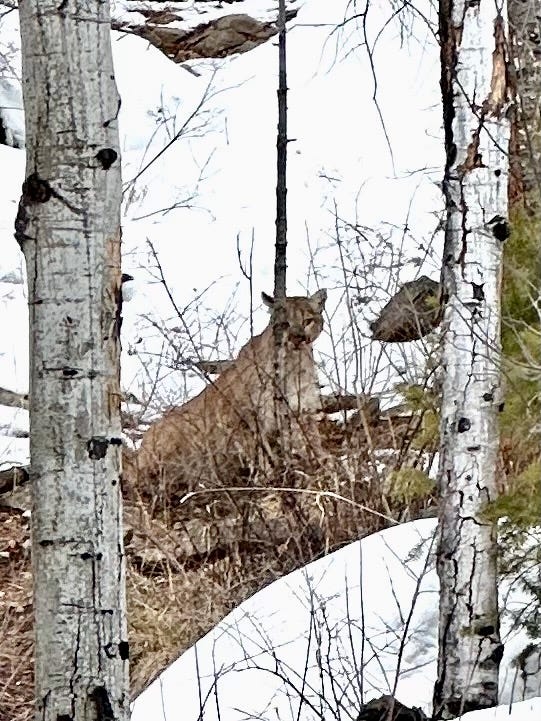
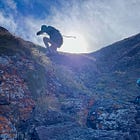
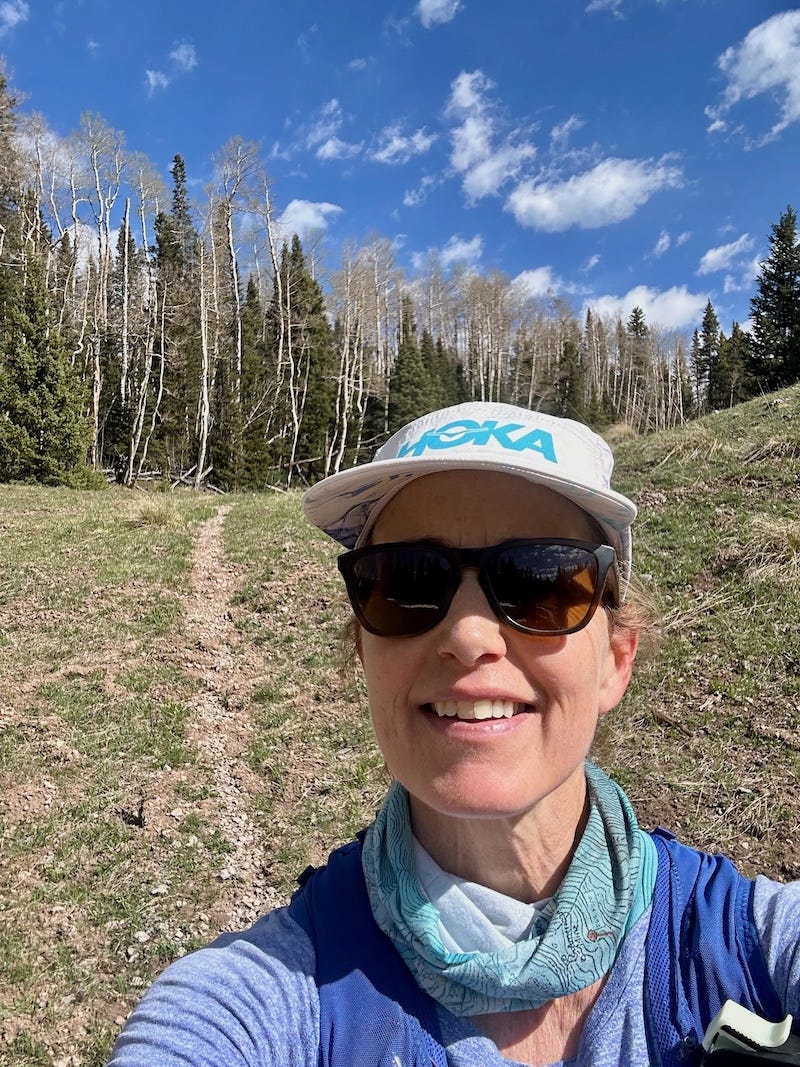

This article really resonated with me - as a mid-20s woman who loves solo trail runs and has solo thru-hiked 1000+ miles, I always struggle to find a good balance between acknowledging risks / fears versus pushing myself to get out of my comfort zone, embrace the fear, and grow as a person.
On my first solo backpacking trip in Lassen National Park, I had a bear sneak up on me while eating dinner at a remote backcountry site. I scared him away by yelling, but it scared me sh*tless! That experience did not hold me back from backpacking in California and Colorado, but certainly made me more aware of the animals that we coexist with when we go out into the mountains, and taught me that I probably need to be prepared to the worst when I choose to go it alone in the outdoors.
Ultimately I have embraced what you echoed in this article - yes, you need to acknowledge the inherent risks of going it alone in the mountains, and you owe it to yourself to be prepared, but I don't think you can let the fear entirely rule you. I thru-hiked the Colorado Trail this summer and had to hitchhike a few times; my friends, my parents, and my partner were TERRIFIED that I was going to get kidnapped. I could have let this fear simply stop me from doing the trail all together, but I chose to face this fear in a prepared way. I listened to my gut and was not afraid to say no if someone creepy offered my a ride. I kept my Garmin GPS in hand at all times when in someone's car (as well as my knife). I communicated very clearly what my intended schedule was and when I should be expected to check in. Heck, I even armed my parents with the SAR and Sherriff's office info for each section of my hike, so in the event I went AWOL they would know exactly who to call. And guess what - it all worked out fine. The thru-hike was absolutely amazing, and on my hitchhikes, I didn't encounter any creeps or weirdos. Despite how well the hike went, I wouldn't not have done anything differently in terms of my preparation.
I guess what I'm trying to say is - we must strike the balance of listening to our guts and not doing anything flagrantly stupid, but to also get out of our comfort zones and face our fears in a prepared way. Otherwise we're destined to a life of maximum comfort but limited growth, in my opinion.
I live in Montana and while grizzly bears are a rare sighting where I live, their numbers are increasing. I do my long long runs with a group of women friends and our dogs. Bear spray is great and hopefully, one has time to deploy it. The one time I’ve encountered a grizzly on a trail, the bear, for whatever reason was running thru the woods and I had zero time to do anything other then register that something was crashing thru the forest and then it simply ran across the trail in front of us and kept running. You could tell me all the stats in the world but at the end of the day, I would still be fearful to go certain places by myself. For me, I think that’s just following good advice. I don’t know why, but encountering a cat just isn’t on my radar although it should be. I see signs frequently. Good for you though for trying to face your fear! Always good to be prepared!
Both my kids are adults in their 30’s, one is about to have their first child. I can’t read the Kristof piece but in my world, I know lots of young families and people getting married. Home ownership has definitely been a struggle for some but somehow they mostly are getting there. What I see is more of a struggle with the 18- early 20’s adults. Mental health issues and failure to launch. Lack of confidence or grit to just start their lives….